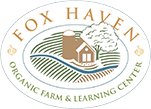October Foragers 2: Turning Inward, Looking Forward
Chestnuts
When I was a child living in a leafy suburb in western Maryland, my neighbors had a tree that tossed spiky green tennis balls all over the ground every autumn. I found them mildly intriguing but I don’t recall seeing any human gather them. I had, of course, sung about chestnuts roasting over an open fire, but I had never eaten chestnuts.
More recently, I read The Overstory by Richard Powers and got the whole story – how chestnut trees provided an abundant food source across America until an epidemic nearly wiped them all out in the early 20th century. A blight-resistant variety is being bred by the The American Chestnut Foundation, and Fox Haven has a grove of chestnut trees as part of the effort to tests those trees so that they can eventually be reintroduced to Appalachian forests.
For our October Foragers 2 gathering, we learned about the chestnuts and other nuts and seeds that are released this time of year. Although the drought limited the chestnut harvest somewhat, we still gathered a bunch and learned about their life cycle, as well as the weevils that burrow into them invisibly, depending on them for their own life cycle.
We also gathered seeds from bee balm, elecampane, and other herbs to save for the next growing season. Lacey also mentioned that dogbane can be spun into fiber, and we saw wasps gathering papery strips of bark to make a nest.
Black Walnuts
Here’s the thing about foraging for nuts: it doesn’t make a lot of financial sense in our current capitalist society. Taylor presented this month’s lesson as an example of how sometimes foraging doesn’t seem worth it. Converting the time it takes to gather and process them into an hourly rate would make black walnuts and many other nuts very expensive compared to buy them in a store, especially for someone working alone. Traditionally this process was done in community.
Nonetheless, this year I gathered black walnuts for the first time, and I would recommend it. What happened is that I noticed in a grassy area next to parking lot. I was thrilled since I had been wanting to make dye with the ink. (I am switching my art practice away from petroleum-based inks and paints.) But then it seemed like a waste to just discard the edible part. Here’s what I did:
- Stomped on those hulls!
- The hulls were then placed in a big pot of water and simmered until they turned into ink. (Here’s a more detailed tutorial.)
- Meanwhile, I rinsed the shells, then left them sitting in a bowl inside to cure for a few weeks.
Then the nuts were edible. It took a hammer to crack them, and then it was slow work to pick the nutmeat out of them. Here’s what I think would be lovely: to invite a bunch of friends over and sit around extracting the edible bits, while having snacks, appetizers, and conversation. Then put all the walnuts into a pasta sauce and eat that together. I hope I create the opportunity to do that next year.
(That’s what nuts and seeds do, pull our thoughts forward to future seasons.)
Acorns
All nuts and seeds hold two somewhat contradictory truths:
- Every small thing has the potential to become a great thing.
- Most things won’t flourish, so it’s best to create lots of things.
I want to share two quotations about acorns that I love:
The first is from The Wisdom Way of Knowing by Cynthia Bourgeault. She tells her own version of a parable about an imaginary acorn land in which all the acorns are preoccupied with keeping themselves fresh and intact in their acorn form, then become shocked when a newcomer acorn tells them that they can grow into oak trees. “An acorn is only a seed; its nature and destiny is to become an oak tree,” she wrote. “Everyone knows this. What’s much more difficult is to apply this same parable to ourselves.”
The second is from Eat Pray Love by Elizabeth Gilbert. She refers to a Zen Buddhist teaching that oak trees are brought into creation by two forces, the acorn and “the future tree itself, which wants so badly to exist that it pulls the acorn into being … it is the oak tree that creates that very acorn from which is was born.”
 While I enjoy reading poetic acorn metaphors and looking at cute acorns with their jaunty caps, I’m daunted by the complexity of processing acorns for food and I haven’t tried it yet. Of course, there are people on the internet showing us how to do it. I enjoyed Alexis Nikole’s post about acorn bacon:
While I enjoy reading poetic acorn metaphors and looking at cute acorns with their jaunty caps, I’m daunted by the complexity of processing acorns for food and I haven’t tried it yet. Of course, there are people on the internet showing us how to do it. I enjoyed Alexis Nikole’s post about acorn bacon:
Maybe next year?
This week I read a sobering story about foraging, about women in South Sudan gathering water lilies because conflict and climate crisis have left them with few food choices. It’s a stark contrast from the abundant chestnut harvests described in The Overstory, or the concept of learning foraging for fun and weekend entertainment. Such an important reminder to value and protect the resources we have, while we can.

Written by Emma Williams
